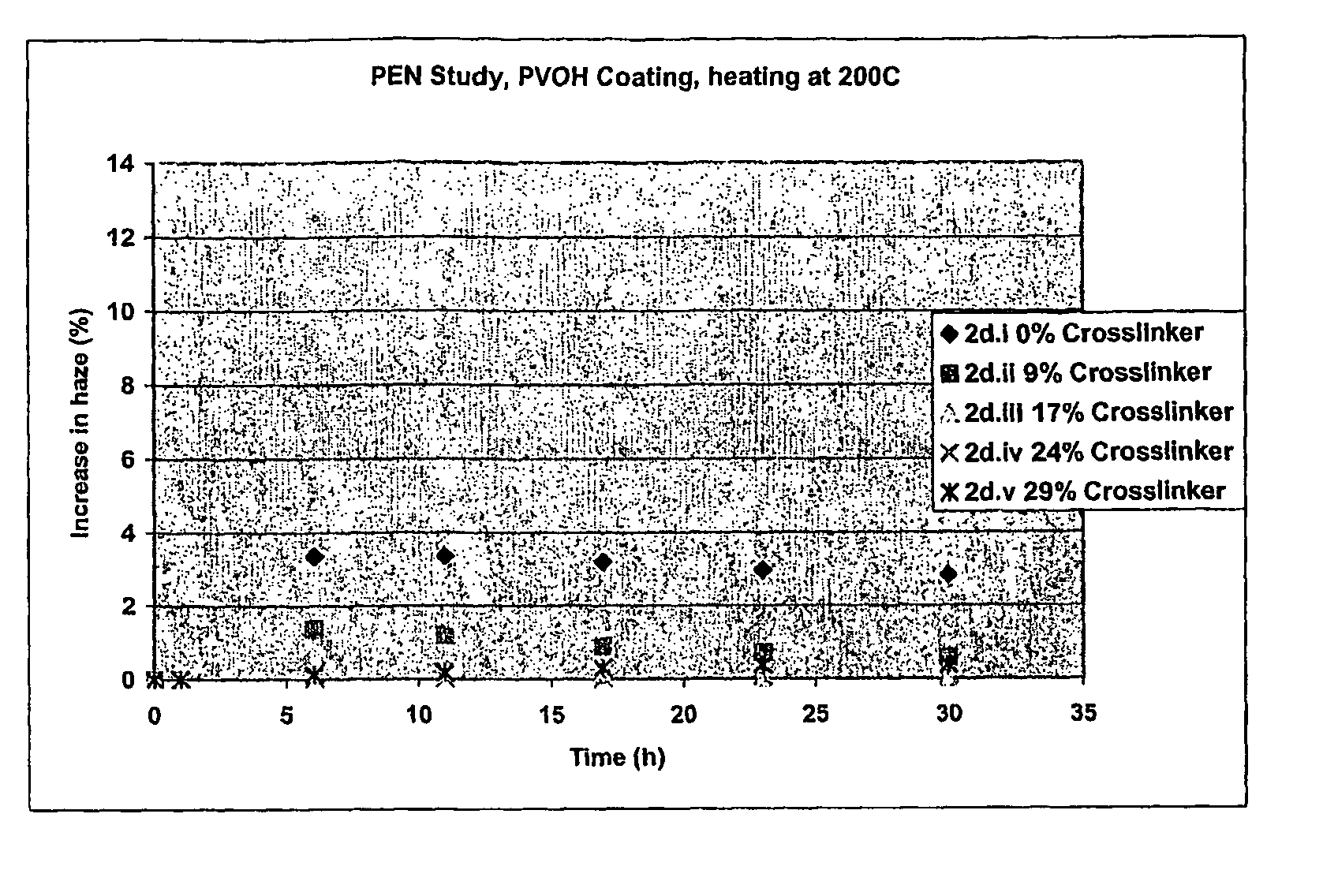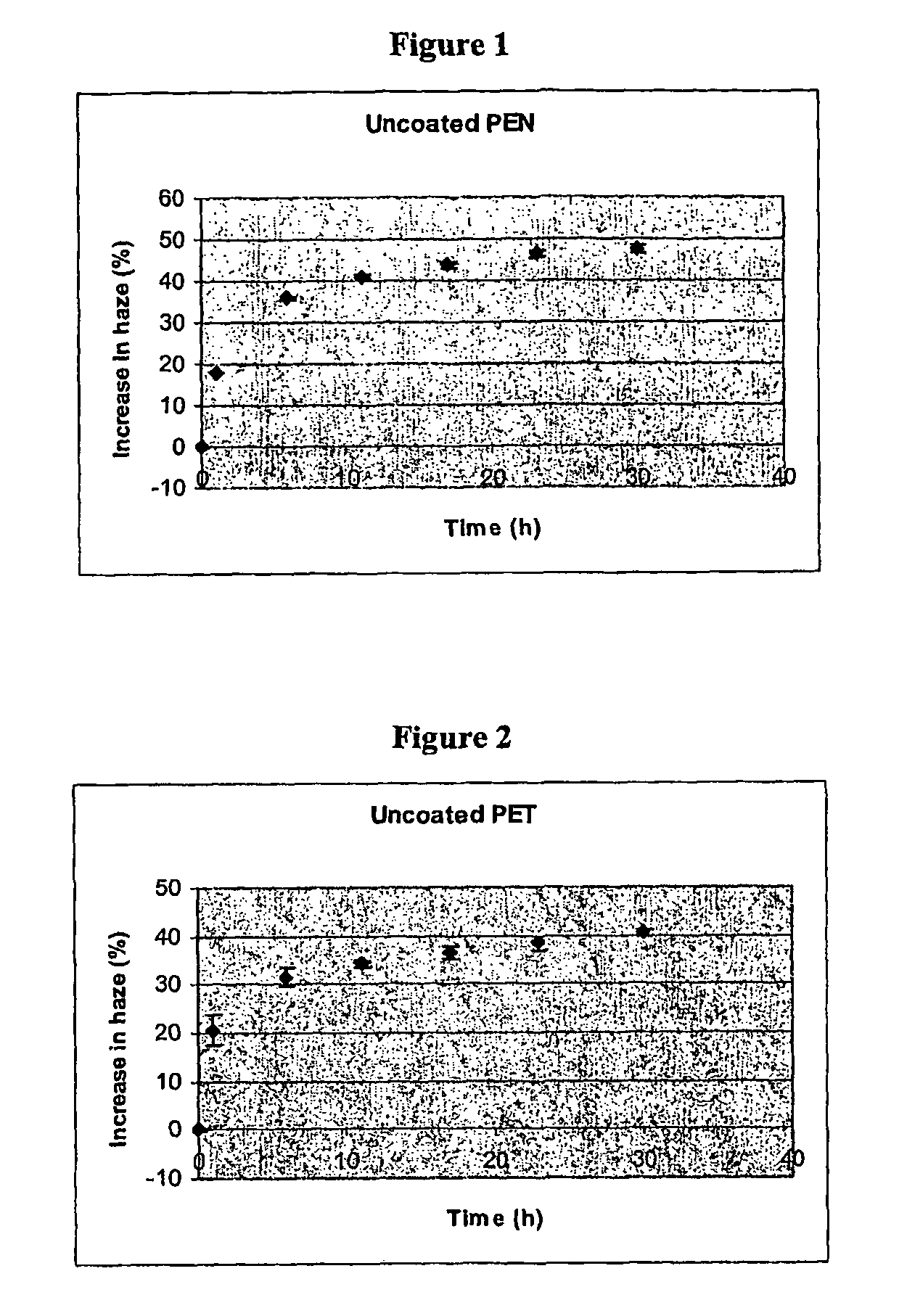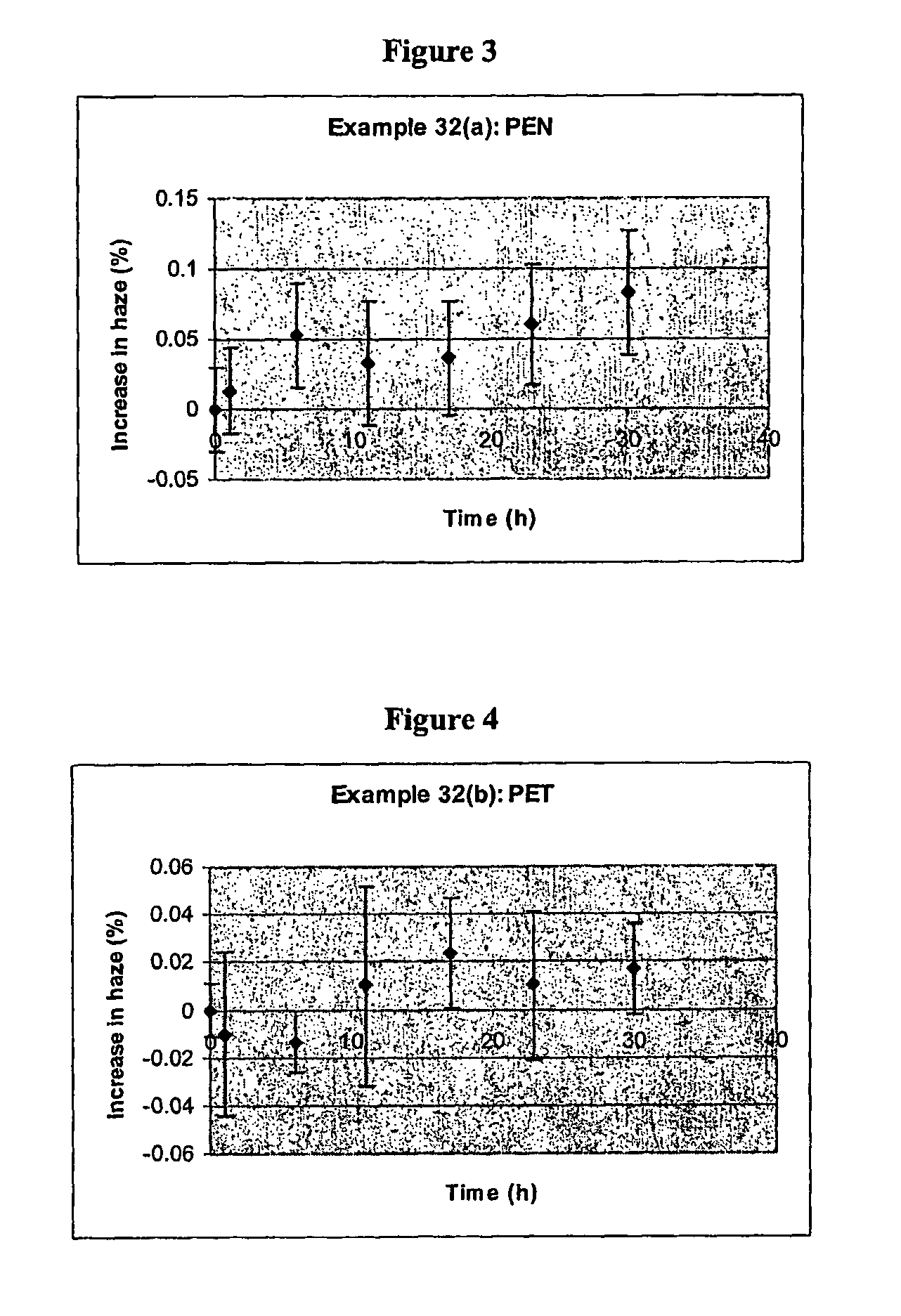Manufacturing process for polyester film exhibiting low thermal shrinkage
a polyester film and manufacturing process technology, applied in the field of polyester films, can solve the problems of residual shrinkage of the film, only partially achieved md relaxation, small residual shrinkage, etc., and achieve the effects of low thermal shrinkage, improved thermal shrinkage behaviour, and good thermal dimensional stability
- Summary
- Abstract
- Description
- Claims
- Application Information
AI Technical Summary
Benefits of technology
Problems solved by technology
Method used
Image
Examples
reference examples 1-9
[0125]The procedure in comparative example 1 was repeated and a single sheet of the film obtained by that process further treated by annealing in a circulating air oven. The conditions are summarized in Table 1, together with the dimensional change (shrinkage) after testing at 180° C. for 30 minutes and optical properties (haze and TLT).
[0126]
TABLE 1AnnealingTemper-AnnealingTestShrinkageHazeTLTSampleature, C.Time, hrsDirection(%)(%)(%)C. Ex. 1——MD0.160.8286.8TD−0.12Ref. Ex. 19524MD0.181.0286.9TD−0.15Ref. Ex. 21151MD0.130.9786.8TD−0.1Ref. Ex. 311510MD0.121.0685.2TD−0.1Ref. Ex. 411524MD0.131.1586.8TD−0.11Ref. Ex. 5115100MD0.11186.7TD−0.11Ref. Ex. 613524MD0.091.7786.8TD−0.07Ref. Ex. 715524MD0.045.6386.9TD−0.03Ref. Ex. 817524MD015.0686.7TD0.01Ref. Ex. 919524MD030.0986.2TD0
[0127]It is clear that increasing the temperature of annealing results in lower residual dimensional change or shrink in the treated film during subsequent testing. The data in Table 1 demonstrate that the most signifi...
reference examples 10-18
[0135]The procedure in comparative example 2 was repeated and a single sheet of the film further treated by annealing in a circulating air oven. The conditions are summarized in Table 2, together with the corresponding optical properties (haze and TLT values).
[0136]
TABLE 2AnnealingAnnealingSampleTemperature, C.Time, hrsHaze (%)TLT (%)C. Ex. 2——0.4291.4Ref. Ex. 1095240.6691.3Ref. Ex. 1111510.4391.4Ref. Ex. 12115100.4491.4Ref. Ex. 13115240.4791.4Ref. Ex. 141151000.5491.3Ref. Ex. 15135240.4591.4Ref. Ex. 16155240.4791.4Ref. Ex. 17175240.7191.4Ref. Ex. 18195241.7390.8
[0137]Comparing tables 1 and 2 shows the benefit from an appropriate coating on each side of PEN film which is subjected to an annealing procedure. The optical properties are initially improved over those of comparative example 1 as a result of coating, and this quality persists during annealing at up to 155° C. Indeed the optical properties of the coated film remain superior to comparative example 1 even after annealing for...
example 32
[0151]An organic coating composition comprising a mixture of monomeric and polymeric acrylates (including methylmethacrylate and ethylacrylate) and a photoinitiator (Irgacure™ 2959; Ciba) in a solvent of methyl ethyl ketone (2-butanone) was prepared at 26.5 wt % solids (of which about 1% of these solids is the photoinitiator) to a viscosity of about 1.22 cP (centipoise). The coating was dried at 80° C. and then cured by UV-radiation. The haze measurements of the coated film after annealing for up to 30 hours are shown in the graphs of FIGS. 3 and 4. The initial average haze values of the PEN and PET films were 0.74% and 0.48%, respectively.
PUM
| Property | Measurement | Unit |
|---|---|---|
| time | aaaaa | aaaaa |
| weight percent | aaaaa | aaaaa |
| weight percent | aaaaa | aaaaa |
Abstract
Description
Claims
Application Information
 Login to View More
Login to View More - R&D
- Intellectual Property
- Life Sciences
- Materials
- Tech Scout
- Unparalleled Data Quality
- Higher Quality Content
- 60% Fewer Hallucinations
Browse by: Latest US Patents, China's latest patents, Technical Efficacy Thesaurus, Application Domain, Technology Topic, Popular Technical Reports.
© 2025 PatSnap. All rights reserved.Legal|Privacy policy|Modern Slavery Act Transparency Statement|Sitemap|About US| Contact US: help@patsnap.com



